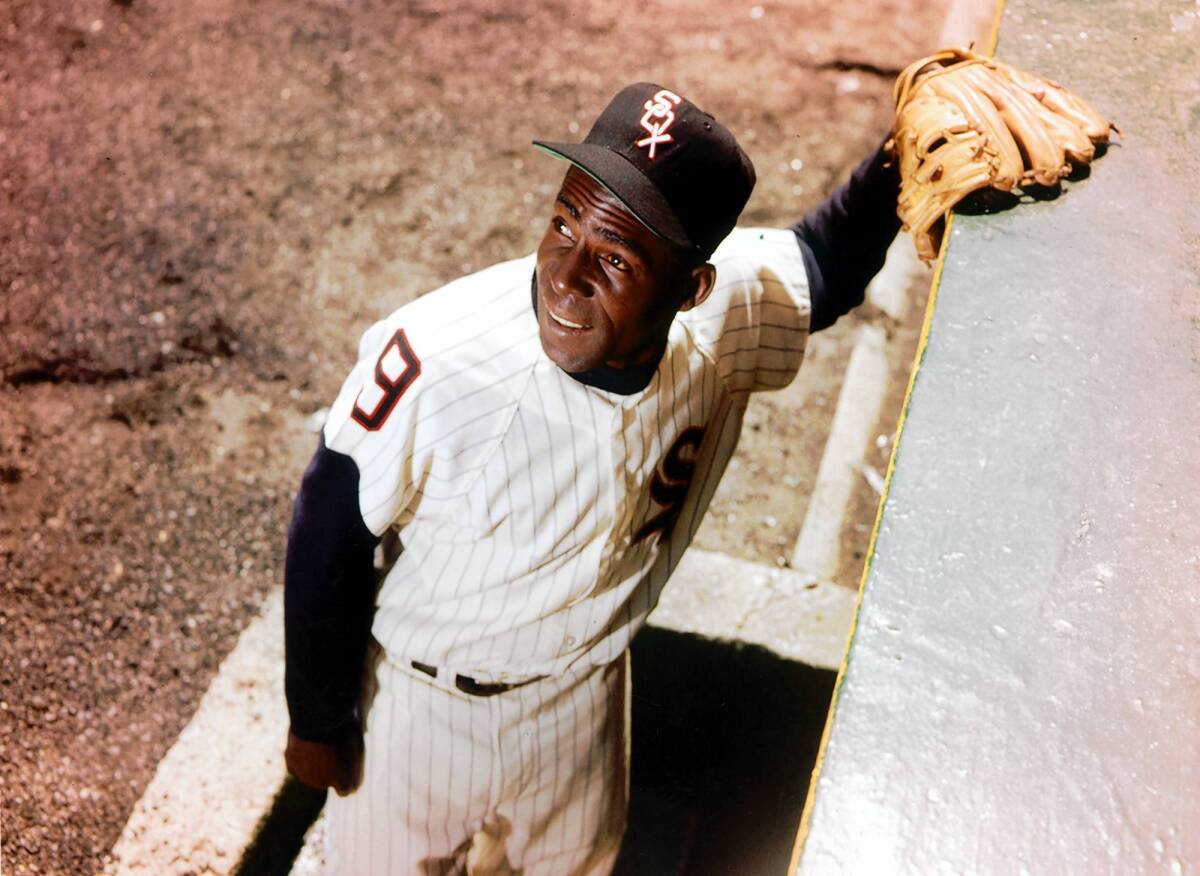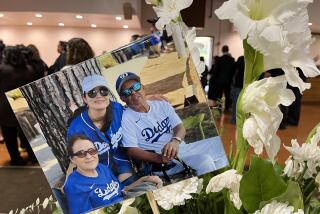Minnie Minoso dies; Chicago’s first black big-league baseball player

- Share via
Minnie Minoso, the “Cuban comet” who became Chicago’s first black major league baseball player when he signed on with the White Sox in 1951, died Sunday.
He was 90, according to Major League Baseball, but accounts of his age vary.
Found unresponsive in the driver’s seat of a car at a Chicago gas station at about 1 a.m., Minoso was declared dead at the scene, police said. Family members believe Minoso’s death was caused by a heart ailment, his son Charlie Rice-Minoso told the Chicago Tribune.
The son of sugar-cane cutters in Cuba, Minoso was regarded as the first Latin American superstar, inspiring young players from the region who dreamed of joining him in the big leagues.
Puerto Rican native and Hall of Famer Orlando Cepeda once called him “the Jackie Robinson for all Latinos; the first star who opened doors for all Latin American players. He was everybody’s hero. I wanted to be Minoso. [Roberto] Clemente wanted to be Minoso.”
Minoso was a seven-time All-Star whose combination of speed and power led a White Sox revival in the 1950s. In his later years, he served as one of the team’s top goodwill ambassadors.
Warm and outgoing, he decked himself out in broad-brimmed hats and colorful shirts.
“He was adorned with gold – on his wrists and his neck and in his teeth,” sportswriter Marty Noble wrote in a tribute for Major League Baseball. “He liked to flash cash and loved his green Cadillac. Minoso became famous for being fabulous. The public adored him.”
From his first at-bat for Chicago – a home run against the New York Yankees – Minoso became an immediate star, batting over .300 eight times, with 1,023 RBIs over 17 major league seasons.
In 1952 and 1953, he led the American League in stolen bases. He led the league in triples in 1954 and 1956 and in doubles in 1957.
With his tightly crouched batting stance, Minoso also made the record books for the number of times he was hit by a pitch — 22 in 1956 alone. For 10 seasons he led the American League. In 1955, he spent nine nights in a hospital after a pitch fractured his skull.
Yankees manager Casey Stengel once marveled at how fearless Minoso appeared as hurlers aimed for the strike zone he was crowding.
“I tell my fellows to throw ‘em inside there with plenty of mustard on the pitch,” Stengel said. “But that don’t scare Minnie.”
Born Saturnino Orestes Armas Minoso Arrieta in the small Cuban town of El Perico, Minoso said in his 1994 autobiography “Just Call Me Minnie” that his birth date was Nov. 29, 1925. Confusion arose, he said, after he inflated his age by three years on a U.S. visa application. However, a biography on his website gives the date as 1922, as do other sources.
At 14, Minoso played for a team run by the Ambrosia Candy Co. in Havana. He was well known as a professional in Cuban baseball before coming to the U.S. in 1945 and playing three seasons for the New York Cubans in the Negro Leagues.
In 1948, Bill Veeck, then owner of the Cleveland Indians, purchased his contract and Minoso made his major league debut in 1949, playing nine late-season games for the Indians.
Traded to the White Sox in 1951, he hit .326 in his first season and was a runner-up for rookie of the year.
After another few years with Cleveland in the late 1950s, he rejoined the White Sox in 1960. Veeck by then owned the Chicago team and the two maintained a decades-long relationship.
Famous for his crowd-drawing gimmicks, Veeck brought Minoso out of retirement for fleeting appearances as a player in 1976 and in 1980. In the former outing, Minoso managed one hit in eight at bats; in the latter he went 0 for 2.
Still, Veeck scored with publicity and Minoso walked away with bragging rights, pointing out that he was on the field for the White Sox in five successive decades.
Minoso received some criticism for participating in Veeck’s publicity stunts. According to some baseball pundits, it even hurt his chances for election to Baseball’s Hall of Fame.
In 2014, the most recent White Sox campaign to get Minoso to Cooperstown failed, despite his .298 career batting average, his .389 on-base percentage, and his well-known skills in the outfield.
Bill James, a baseball statistics expert, rated Minoso the 10th-best left fielder of all time in a 2001 analysis.
“Had he gotten the chance to play when he was 21 years old, I think he’d probably be rated among the top thirty players of all time,” James wrote.
In his later years, Minoso made no secret of his hope for a speedy induction.
“Don’t put me in the Hall after I’m dead,” he said. “I want to taste it, like a good steak. I want to enjoy it.”
Minoso’s survivors include Sharon, his wife of 30 years; sons Orestes Jr. and Charlie; and daughters Marilyn and Cecilia.
More to Read
Start your day right
Sign up for Essential California for the L.A. Times biggest news, features and recommendations in your inbox six days a week.
You may occasionally receive promotional content from the Los Angeles Times.






